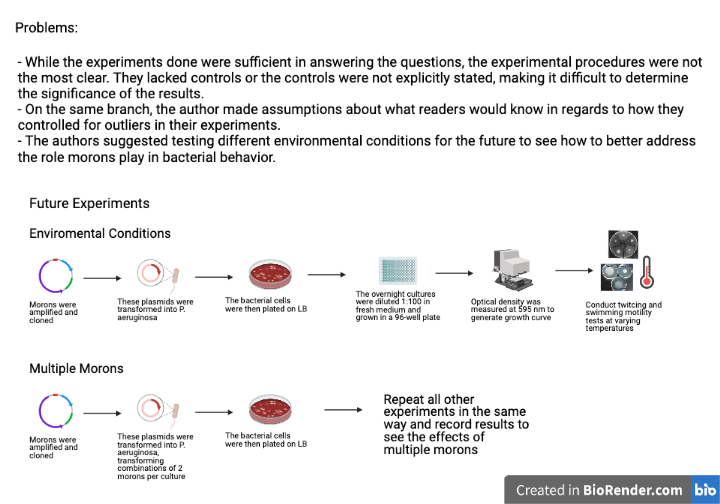TE: Think of the Next Experiment Think of the Next Experiment
In this step you will identify questions you have about your paper, and design two new experiments that can answer those questions.
Generate Questions and Problems
Make a list with 2-5 items that can include problems with the paper, questions that were not addressed, or questions related to the paper that can be answered in the future.
Here are some questions to help guide your thinking:
- Problems with the paper
- Does the experimental procedure do a good job of answering the research question?
- Was the size and scale of the experiment sufficient to answer the question thoroughly?
- Questions that were not addressed
- Did you have any questions while reading the paper that were not discussed?
- Did the author(s) make any assumptions that require further exploration?
- Questions that can be answered in the future
- Did the author(s) mention any ideas for future research in the discussion section?
- Do you have any ideas for research questions that could be answered in a future experiment?
Design New Experiments
Let’s ask ourselves, “What experiments should be done next?”
- Brainstorm solutions: Using the list of questions and problems you just created, spend 5 minutes brainstorming ideas for new experiments that can answer those questions or address those problems.
- Design new experiments: Diagram or cartoon 2 of the new experiments you brainstormed. Include controls and experimental conditions. Your diagram or cartoon should be as specific and detailed as the methods cartoon you created in R.









